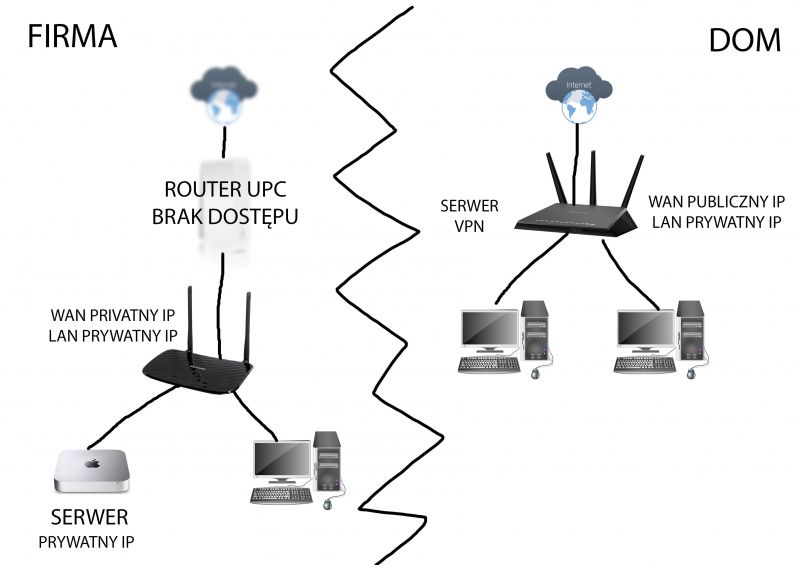Hello,
1. Two LANs, both with Internet access
a. in one permanent public IP - "DOM"
b. in the other, from the WAN side, a private, imposed IP address (no access to the edge router) - "COMPANY"
2. Server (www, ftp etc.), behind NAT, in a network without public IP ("COMPANY" network)
3. The edge router in the network with public IP has the option of setting up an OpenVPN (tomato) server. ("DOM" network)
I attach a diagram (as I could, I did so )
)
Questions:
1. Am I able to access the server behind NAT in the "FIRM" network by connecting over the public IP of the "DOM" network and redirecting traffic through the VPN tunnel on the "DOM" edge router VPN server?
2. What should be the addressing of both LANs, assuming that the private WAN IP in the "COMPANY" network is imposed? Of course I know that the WAN and LAN networks "COMPANY" must be in different networks
a. LAN "COMPANY" and "HOME" - the same
b. LAN "COMPANY" and "DOM" - different

1. Two LANs, both with Internet access
a. in one permanent public IP - "DOM"
b. in the other, from the WAN side, a private, imposed IP address (no access to the edge router) - "COMPANY"
2. Server (www, ftp etc.), behind NAT, in a network without public IP ("COMPANY" network)
3. The edge router in the network with public IP has the option of setting up an OpenVPN (tomato) server. ("DOM" network)
I attach a diagram (as I could, I did so
Questions:
1. Am I able to access the server behind NAT in the "FIRM" network by connecting over the public IP of the "DOM" network and redirecting traffic through the VPN tunnel on the "DOM" edge router VPN server?
2. What should be the addressing of both LANs, assuming that the private WAN IP in the "COMPANY" network is imposed? Of course I know that the WAN and LAN networks "COMPANY" must be in different networks
a. LAN "COMPANY" and "HOME" - the same
b. LAN "COMPANY" and "DOM" - different



